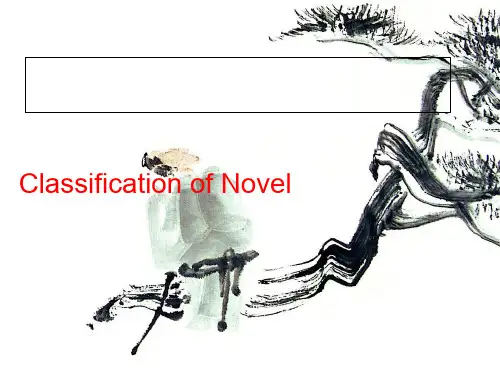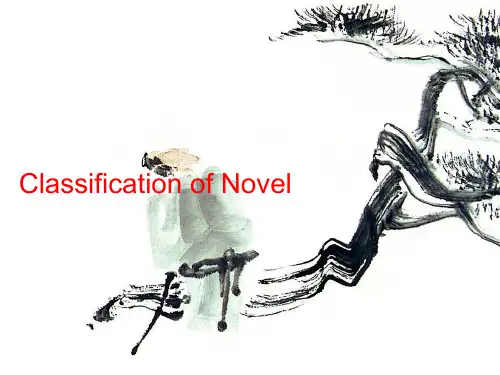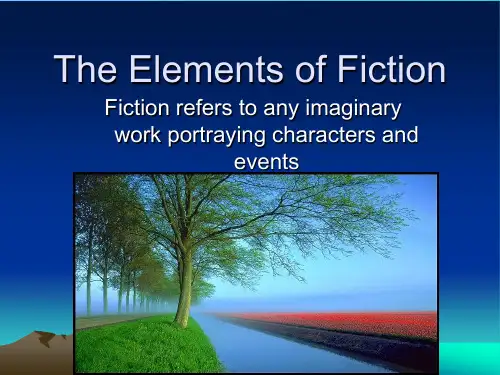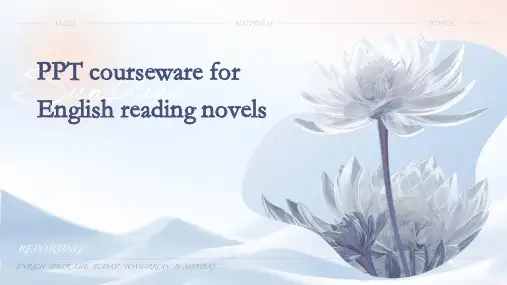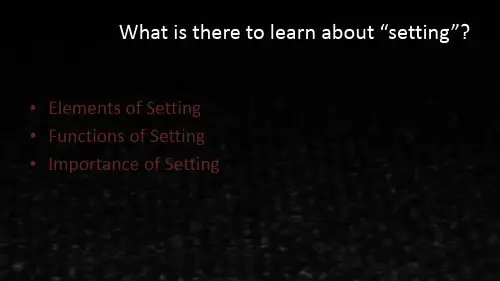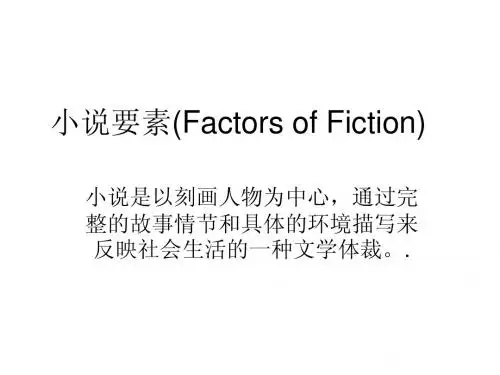小说的要素 英文 ppt课件
- 格式:ppt
- 大小:825.00 KB
- 文档页数:89
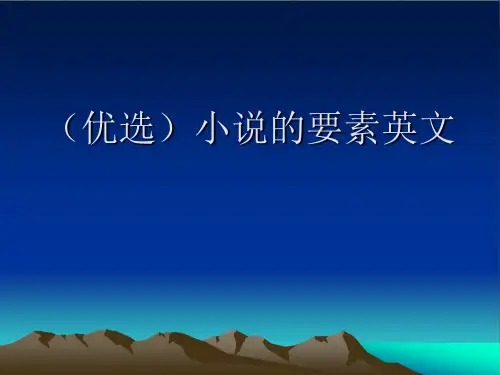
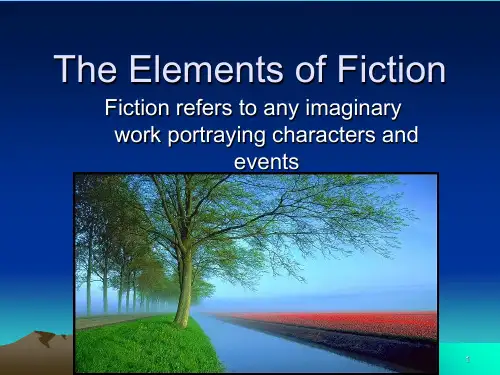
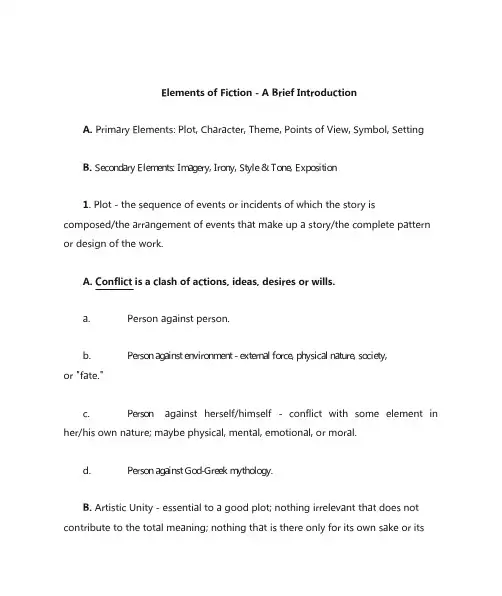
Elements of Fiction - A Brief IntroductionA. Primary Elements: Plot, Character, Theme, Points of View, Symbol, SettingB. Se co nd ary Ele m e nts: Im ag e ry, Iro ny, Style & To ne, Exp o sitio n1. Plot - the sequence of events or incidents of which the story is composed/the arrangement of events that make up a story/the complete pattern or design of the work.A. Conflict is a clash of actions, ideas, desires or wills.a.Person against person.b.Pe rso n ag ainst e nviro nm e nt - e xte rnal fo rce, p hysical nature, so cie ty,or "fate."c.Pe rso n against herself/himself - conflict with some element in her/his own nature; maybe physical, mental, emotional, or moral.d.Pe rso n ag ainst Go d-Gre e k m ytho lo g y.B. Artistic Unity - essential to a good plot; nothing irrelevant that does not contribute to the total meaning; nothing that is there only for its own sake or itsown excitement.C. Plot Manipulation and Fabulation - a good plot should not have any unjustified or unexpected turns or twists, no false leads, and no deliberate and m isle ad ing info rm atio n; fab ulatio n is the intro d uctio n o f the fab ulo us o r unre alisticor gothic elements in an otherwise realistic setting.D. Story Ending: In a Happy Ending the stereotypical expectation is that the protagonist must solve all the problems, defeat the villain, win the girl, and live happily everafter. Unfortunately, many real life situations have unhappy endings; for the writers of serious fiction, the unhappy endings are more likely to raise significant issues concerning life and living.E. Type s o f Plo t:a. Trag e d y(no b le)b. Comedy(less great/noble)c. Romance(less great/noble)d. Satire (used to teach lesson or present a point of viewF. Use o f Plo t:a. The structure of its actionsb. Order: 1st, 2nd, 3rd…c. To create(The author uses actions as a painter uses paints to create)d. To achieve particular words to create certain effect2. CharacterA. Direct Presentation - author tells us straight out, by exposition or analysis, o r thro ug h ano the r characte r.B. Ind irect Presentatio n - autho r sho ws us the character in actio n; the read erinfers what a character is like from what she/he thinks, or says, or does. These are also called dramatized characters and they are generally consistent (in behavior), motivated (convincing), and plausible (lifelike).C. Character Types - a Flat character is known by one or two traits; a Round character is complex and many-sided; a Stock character is a stereotyped character (a m ad scientist, the ab sent-m ind ed p ro fesso r, the cruel m o ther-in-law); a Staticcharacter remains the same fro m the beginning o f the plot to the end; and a Dynamic (developing) character undergoes permanent change. This change must be a. within the possibilities o f the character; b. sufficiently m o tivate d; and c. allowed sufficient time for change.D. Protagonist and Antagonist - the protagonist is the central ch aracte r,sympathetic or unsympathetic. The forces working against her/him, whether persons, things, conventions o f so cie ty, or traits o f their own ch aracte r, are the antagonists.3. Theme - the controlling idea or central insight. It can be 1. a revelation of human character; 2. may be stated briefly or at great length; and 3. a theme is not the "moral" of the story.A. A theme must be expressible in the form o f a statement - not "motherhood" but "Motherhood sometimes has more frustration than reward."B. A theme must be stated as a generalization about life; names of characters or specific situations in the plot are not to be used when stating a theme.C. A the m e m ust no t b e a g e ne ralizatio n larg e r than is justifie d b y the te rm s o fthe sto ry.D. A theme is the central and unifying concept of the story. It must adhere to the following requirements:1. It must account for all the major details of the story.2. It must not be contradicted by any detail of the story.3. It must not rely on supposed facts - facts not actually stated or clearly implied by the story.E. There is no one way of stating the theme of a story.F. Any statem ent that red uces a them e to so m e fam iliar saying, ap ho rism, o r cliché sho u ld b e avo id e d. Do n o t u se "A stitch in tim e save s n in e," "Yo u can't ju d g e a book by its cover, " "Fish and guests smell in three days," and so on.。
